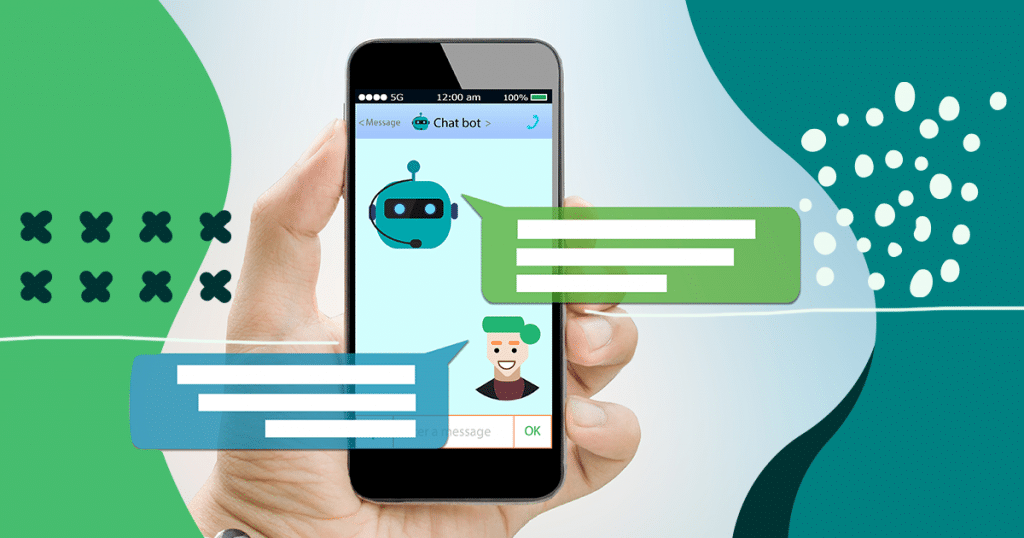Chatbots have a negative effect on corporate image when customers are angry or stressed, according to a recent Journal of Marketing study.
Still, the use of artificial intelligence in marketing sectors is increasing as companies invest more in improving their users’ experience.
As a result, the use of chatbots has become a very common practice, aiming to replace or reduce the need for people in customer service, especially. It is estimated that by 2024, the chatbot market will surpass the $1.34 billion mark, proving to be a growing sector.
Chatbot is a software that manages the exchange of messages with customers, simulating a human conversation and making it possible to automate repetitive and day-to-day bureaucratic activities.
Therefore, this feature has been attracting attention and becoming a darling of many businesses that value agility, cost savings and greater operational efficiency in their customer service team.
And because it is a growing sector, it is necessary that companies plan its use in customer service carefully, taking into account, for example, the emotional context of users.
To achieve the expected success with the tool, many companies are attributing human characteristics to chatbots, such as personal names and avatars, with the intention of further humanizing this technology and causing greater adherence by their customers.
But will only these actions generate a positive effect in the use of the chatbots strategy? That’s what we’re going to check in this article, follow it!
How chatbots create a good user experience
Although there are cases of failures and problems generated by the wrong configuration and use of chatbots in some companies, it is remarkable that, if well implemented, this strategy can generate efficient results and assist in the operational success of teams.
This is the case of Georgia State University which used chatbots with the aim of reducing a problem known as “summer thaw” where students are accepted to study, but do not attend classes.
Chatbot was created at the institution with the aim of helping new students to overcome the obstacles and challenges of this first stage in their academic lives.
When the university made a chatbot available to answer thousands of student questions, the result was a 22% reduction in the summer melt and 324 more students served on the first day of the new semester compared to the previous year.
Another interesting example is the Bank of America’s chatbot. This analyzes customer data within their organization so they can generate reports to help their customers make better decisions about their investments.
However, on the other side of the coin…
But, as mentioned at the beginning of this topic, not everything is rosey and, if used in the wrong way, Chatbots can generate a lot of headaches for your company. This was the case with the bot “Luda Lee” created by Facebook.
The chatbot attracted attention with its speaking style and attracted 750,000 users and 70 million conversations in total on Facebook.
However, after a few weeks on the air, she made homophobic and offensive comments about disability and shared personal user data. The company is being sued by around 400 people.
How to implement chatbot effectively in the operation of a company?
So that you don’t get into a trap, as happened with Facebook, I’ve separated 3 important tips that can help you to have a positive result with the use of chatbots in your company.
Define the bot’s purpose and map the message flow
The most successful chatbots are those that deliver consistent value to the user and provide the necessary answer. That’s why it’s important that you clearly define the bot’s goal and correctly map your customer’s shopping journey so that you can effectively guide them towards solving their problems.
In complex cases, the option to interact with humans is essential
According to a recent survey published by Verizon Business aiming to understand digital interactions between consumers and brands, 56% of respondents feel comfortable with fully automated interactions, while 16% express discomfort.
This means it is important to have the option to interact with a human, especially in more complex cases. A situation that is simple to be resolved will not become a reason for great stress for the customer and for the image of your company. Still on the survey, 78% of respondents consider the combined human-tech interactions a better experience than those that are exclusively human.
Figure: Share of respondents who say the combined human/automated interactions they have had with companies in the past 12 months were as or more satisfying than fully human interactions.
Set your bot’s voice tone
Each target audience expresses itself in different ways, that is, each business has its own language. Therefore, when building and implementing the chatbot, it is essential that you teach it to speak the same language as your persona.
Essentially, the chatbot will be trained to correctly understand what consumers type, avoiding major inconvenience.
And what is the conclusion of all this?
Seeking the humanization of chatbots can be a great way to increase the adherence of this artificial intelligence, especially in the customer service sector.
As the Journal of Marketing study shows, human-like interfaces can increase customer confidence, increase perceived competence and make online experiences more enjoyable.
On the other hand, in more complex cases with angry customers, chatbots can pose a threat to your company’s reputation. Therefore, reducing human contact in stressful situations can alleviate customer dissatisfaction and often lead to a break in the partnership.
Therefore, it is necessary to find the right balance between the activities that should be done by the technology and those that should involve the human aspect in the process.
It is interesting to use the chatbot in order to filter the customers’ recurring needs and doubts, in order to direct this user to human assistance or not, depending on each situation.
This will allow your internal team to gain more productivity and time to solve more strategic demands. This will help your company to save on operating costs.
Remember, chatbots can be a handy tool for your company, but it is important to use them wisely and with planning!







